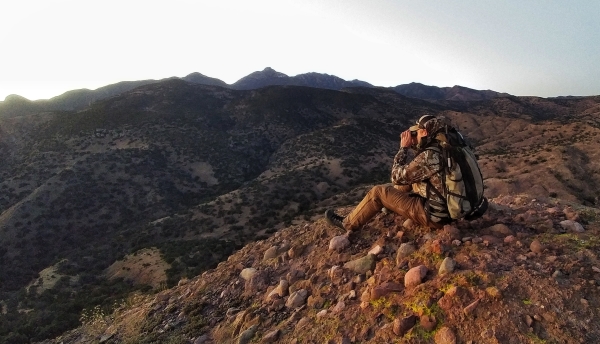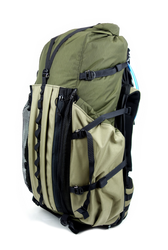Product Focus: Seek Outside Peregrine 3500 Backpack
Posted by on 22nd Feb 2018

Who needs the Peregrine?
The day hunter who needs organization and the ability to haul meat.
To see the Peregrine, click the link below:
Best Features
The Peregrine is feature rich, but I believe these are the best for day hunting.
- Adjustable frame height
- Five pockets plus a side zipper
- Breakaway load carry
What makes the Peregrine a great day hunting pack is the ability to organize and access day gear quickly, while also expanding into a meat hauling pack when needed.
Two face zippered security pockets plus a mesh stuff pocket carry food, calls, bugle, headlamps, or other necessities, while two extra tall side pockets swallow water bottles or a tripod and spotter.
Our adjustable frame height means that you can run the pack in day use at a 24 inch height. This lower height gives a lot of head freedom to look up, and also makes it easier to clear low hanging limbs quietly.
Nimble and out of the way while hunting, if you get an animal down frame extensions can be inserted to raise the frame height to 26 or even 28 inches, better for hauling heavy loads.
Breakaway load carry and a movable load shelf mean you can carry a load of meat between the packbag and frame, and position it vertically where you want it - preventing sagging or balling of the load.
Overall the Peregrine is a small and organization driven pack that easily carries big optics and can handle huge loads of meat. Coues deer or elk hunting would be excellent uses.
Peregrine Deep Dive
I’ve been using the Peregrine for the last several months as my primary day hunting and hiking pack. It’s seen a lot of miles deer hunting and chasing small game and predators during the winter. I’m looking forward to warmer weather and the start of turkey season.
All around I like the Peregrine because it is a good handy size and fills its’ intended purpose very well. The pack is big enough for an overnight or even 2-3 days if needed, which makes it plenty big for some food, backpacking stove, extra insulation, and the other gear that a long day hunt in cold weather requires. Big enough, but not too big.
The pockets on the face of the bag consist of two vertical zippers opposing each other, and stacked so one is on top of the other. Both these pockets are in the center front of a large stuff pocket with mesh drainage that lies behind the security pockets.
I find this system makes it easy to place seldom used but needed gear in one of the zippered pockets, more frequently used items in the other, and bulkier gear in the stuff pocket. It’s a handy system.
The two side pockets are tall enough that they make accessing a water bottle impossible while wearing the pack, which is my only gripe about them. They work very well for a small tripod or spotter, and they’re big enough to give a sense of security about stuffing small items into them.
I run my Peregrine with a top lid and two hipbelt pockets, and I can’t think of a scenario when I’d need more organization. Predator calling requires a lot of small pieces of gear, and this system gives me more than enough places to put everything.
I find that I use the side zipper a lot. The zipper fully separates the shroud, and has a pull on the top and bottom. So when the rolltop is rolled down I simply zip up from the bottom to access the main packbag. Honestly I don’t unroll the top of the pack a lot, preferring to use the side zipper.
Meat Carry
The Peregrine is built on the Revolution Platform, meaning the packbag can fully separate from the suspension, allowing you to sandwich a load of meat between the packbag and the frame. This is a valuable ability for a smallish daypack, because a full quarter would be tough to squeeze inside the packbag.
Another really good way to utilize the Breakaway ability is with a partially empty packbag by simply stuffing your gear into the bottom of the bag, detaching the bag from the frame at the top, and rolling it down as far as it’ll go. Then placing the meat on the frame above the rolled down packbag.
From the side this would look like the bottom third to half is the packbag, with meat sitting on top and compressed. In this mode the packbag and gear in it acts as a meat shelf, keeping the meat from sagging, but it also keeps all the weight in line and doesn’t cause the load to get too far from your body. When possible this is my preferred way to carry meat plus a day load.
To Sum it Up
The Peregrine stays loaded and sits in my gear room or in my truck, ready to go at any time. It’s my choice for a day hunt or an impromptu hike or simply a trip exploring new ground. I feel like this pack can handle any task I have short of a longer multi-day backpacking trip.
…